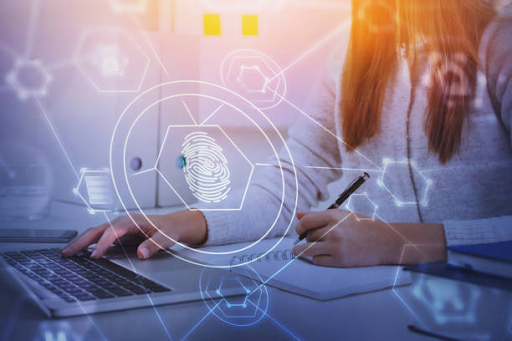Identity verification and fraud prevention are enormous challenges that all companies face. Technology is moving so now, enabling criminals to steal identities and personal data more than ever before. Traditional methods of verifying often need to be more. That’s where digital AML biometrics comes in. Using things like fingerprints, and facial recognition, companies have a powerful new tool for verifying their customers and protecting themselves.
DigitalAML biometrics works by capturing and analyzing biological data about someone. Such things as the lines in a fingerprint or unique patterns in the iris cannot be forgotten or stolen like a password. In this article, we shall dig deep into the matter of using biometrics in the process of customer onboarding and during the period of an ongoing monitoring process, which could represent an overhaul in the process of identity verification.¬
The Issues with Traditional Verification
Traditional identity verification is currently reliant on ID documents, signatures, and passwords. Research has shown that these methods are up to 20% inaccurate. Digital AML biometrics solves that problem because things like fingerprints cannot be stolen. Biometrics technology verifies identity down to the unique biological characteristics of an individual, closing the gaps that traditional methods leave open to fraud.
How Biometrics Work for Digital Identity Checks?
The biometric technology works by capturing and analyzing biological characteristics such as fingerprints, irises, or facial features. Unique cameras security and sensors are able to map out the intricate details that make one’s biometrics. Digital AML biometric solutions then convert these into a mathematical algorithm that can be compared automatically to biometrics on file. Identity checks can, within only a few seconds, verify if the person is who they claim to be, with a very high level of accuracy above 99%. This provides a more secure form of identity proofing than non-biometric methods.
Facial Recognition, Fingerprint, and Iris Scanning Technologies
All biometric modalities have their own set of advantages for identity checks. While non-intrusive, facial recognition can suffer from changes in appearance. Fingerprint scanning is an age-old technology and has been functional for over a century. Many fingerprint biometric solutions are commonly used throughout the world. iris scanning is accurate because no two irises are the same.¬
Since it requires the user to make contact with an iris camera, this technique is also intrusive. Biometric AML products maximize the benefits while reducing individual limitations. These techniques include facial analysis, fingerprint, and iris scanning and aid in establishing the identity of a person with their biological unique traits.
Constant Monitoring Throughout a Customer’s Lifetime
While the traditionalAML screening performs a one-time identity check during onboarding, over 15% of accounts are later taken over by fraudsters. During biometric AML solutions, the check can be done by taking a photo or fingerprint.¬
Thus, it is no longer the question of the actual customer owning that account years later; it will only monitor the customer. Continuous biometric screenings bring identity verification full circle for complete ongoing customer due diligence.
Making Compliance Work Better
One of the significant challenges in keeping up with complex AML regulations is the enormous fines for non-compliance that could run into the millions. Biometric solutions enable ongoing AML screening. This is achieved by identifying those customers to whom enhanced due diligence should be applied, thereby allowing for more focused monitoring of such accounts. Biometric AML products ensure that they have all the requirements to implement a way of screening and give audit-ready proof that a company has systems in place to manage risk and comply with all standards and requirements.
More Cost-Effective and Efficient
Manual handling of AML/KYC programs is a resource-intensive process. A majority of financial organizations spend almost 40% more when other traditional methods are used than biometric technology. The biometric solutions integrate into conventional workflows.¬
Verifying identity and flagging activity has been shown to save hundreds of person-hours each month. This means that resources can be more effectively directed toward high-risk cases rather than low-risk, labor-intensive work. Products using biometric AML deliver compliance at a better price point than existing screening technologies.
Future of Digital Identity Verification and Fraud Protection
- Multi-modal biometrics is particularly gaining acceptance, as it combines multiple biological features to improve the accuracy of identity matching.¬
- Inclusion of efficient biometric technologies into ID cards, travel documents, and border control processes Cloud-based biometric solutions use face verification to check IDs from any device without any need for specialized hardware.
- Behavioral biometrics are concerned with typing rhythms, gestures, and speech patterns.¬
- Continuous authentication is the process of renewing identity verification throughout digital transactions rather than only during the onboarding process.¬
- Biometrics allows for managing physical and logical access across a variety of organizations. This, in turn, implies establishing identity data linkages across various domains to reduce fraud between service providers and government entities.¬
- Advances in deep learning and AI make it possible to have biometric solid matching capabilities and the ability to identify identical twins.
- Tighter regulations are pushing further toward using biometric technology to meet strict compliance requirements. The emergence of interoperability standards that allow IDs to be validated across vendor platforms. Comprehensive consumer comfort and the use of biometrics will make identity-proofing ubiquitous‚ÄĒan invisible security feature.



